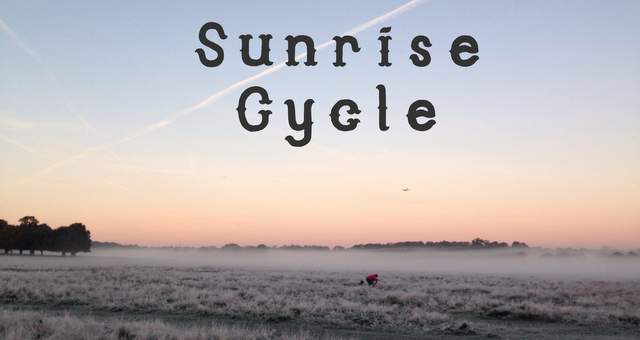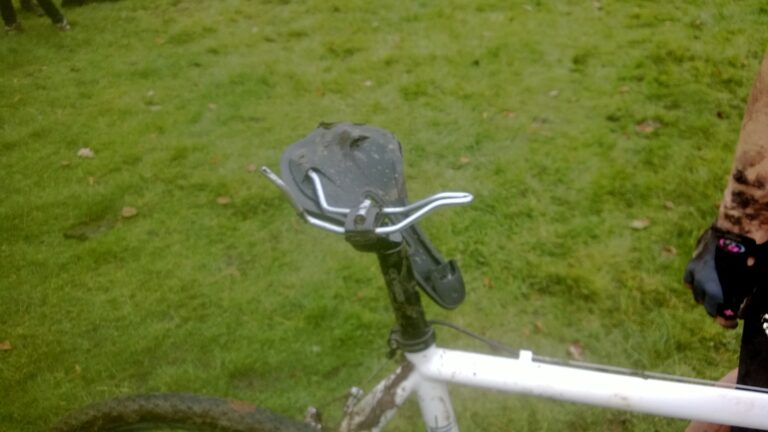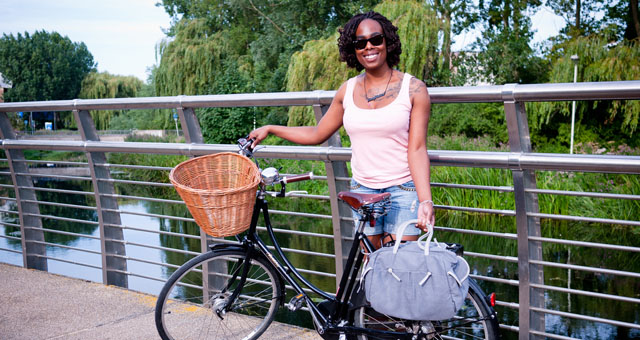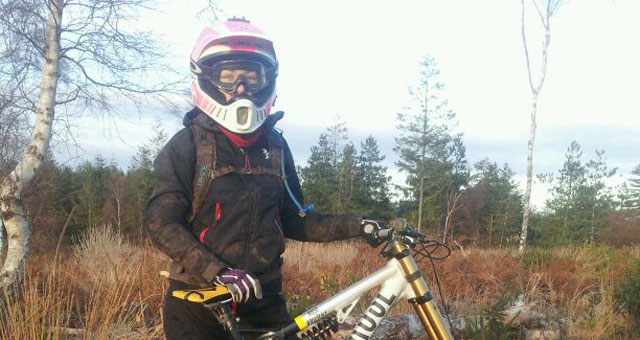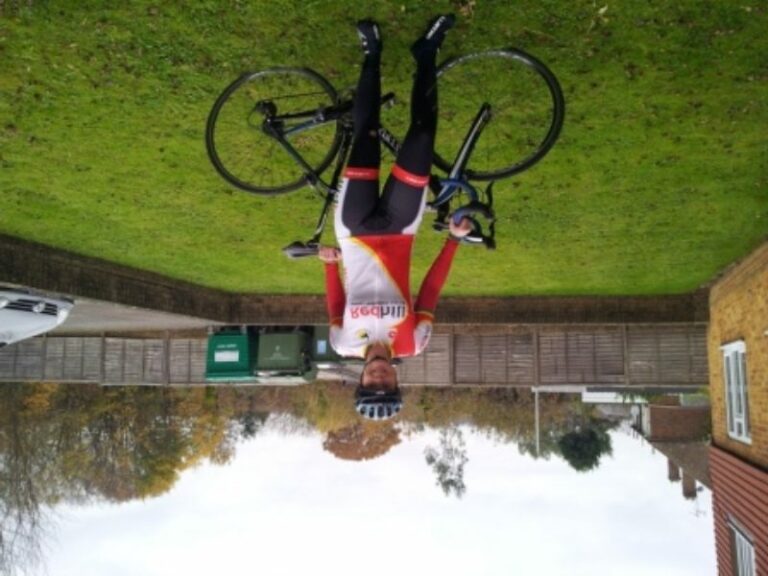Since launching back in January this year (gosh, where has the time gone!) we’ve been inundated with messages, emails and articles from readers responding to topics raised on the website.

It’s been wonderful to receive feedback and certain pieces have really struck home just how long overdue a site like this is.
Gail Wilkinson, personal trainer, health and fitness educator and yoga teacher is one such reader, who was compelled to get in touch. Gail responds to a popular post on Total Women’s Cycling “Cyclerexic: Body image in cycling” sharing her personal story and views on the topic.
Body consciousness and cycling
I read “Cyclerexic; body image in cycling”; and part of this article really upset me. I felt sad that anyone should feel so badly about the way that they look, when there are so many positives to focus on with cycling and exercise in general.
Body consciousness is such a sensitive topic. Only this week Laura Trott declined an invitation to appear at a ‘sexiest women in the world‘ event, as she prefers to be judged on hard work and skill, as opposed to pressure to fulfil a certain image.
I want to acknowledge that it takes guts to put yourself out there. To voice your opinions, no matter how unpalatable, or sensitive they may be. Controversy also opens up debate, and for that I am grateful too.
Initially I was concerned for the author of the “cyclerexic” post, and wondered who the brands are that sponsor her to write about cycling; so I did a search to understand a little bit more about her, and I liked what I found. In most parts her ethos mirrors mine.
On her advertising video the “cyclerexic; body image in cycling” author, says advertising for women has moved on, “it’s not about sexy/it’s about sisterhood”. She says that advertising has gone from “I wish I was her” (photograph of super model) to “I wish I was friends with them” (doing great stuff/supporting each other/having a generally great time).
This is what cycling is about for me. It connects me to people, nature and to myself. The exercise makes me feel amazing, and because I’ve burnt a few hundred calories I can eat cake. What is not to like?

The article made me think about all of the reasons why I exercise; cycle in particular, and what it means to the people in my social circle. This is so much more than cycling to be skinny or worrying about how much we weigh or what we look like.
It would however be untrue to say that I don’t care about the way I look. I do. It is not the primary reason why I exercise though. I primarily exercise to balance my mood. I exercise because it is good for my soul. I exercise because it feels better to exercise than not, and there is never a time that I have wished I had stayed at home rather than be out on my bike. Not even when it snowed.
Of all exercise I’ve tried, I feel that cycling is the most social. You get to chat. You get to enjoy the outdoors. You get to make friends. You get fitter. You get more toned. You get healthier. You get happier.
Most of the rides I have with my girl friends centre on us stopping to eat cake at some point. I wouldn’t say that we’re “social” cyclists. We like to work hard, attack the hills, have secret races with each other on the flats, use each other to time trial and push our limits. But we also like to enjoy and appreciate each other, and the finer things in life too. Like a post ride 3 course lunch and lie down, soaking up the Surrey sunshine.
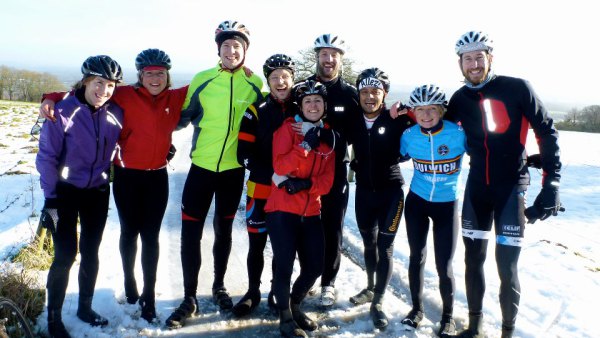
We don’t discuss a need to be thinner, or the need to trim down to fit into lycra, or bemoaning body parts and shapes. We’re too busy, either enjoying or enduring the ride. Now that said we’re all triathletes and cyclists, and as such are probably a little bit fitter than the general population. I do however understand that the very nature of lycra being skin tight might make people feel self conscious.
If we buy in to the perception that “skinny is desirable” that “skinny is healthy”, that we need to look a certain way to do a certain sport, that we need to be thinner, we are perpetuating a myth that makes women permanently feel inadequate, while providing another barrier to getting started and trying something that does make you feel great.
How much you weigh, and how thin you are do not correlate directly to how healthy you are. Health should be our primary concern.

We have fallen into this false idea that the weighing scales can tell us everything that we need to know about our body. That the number can dictate whether or not we are happy or sad. Weighing myself in the past I would feel like I didn’t quite measure up. I am small and I am heavy. I do not weigh myself. I have not weighed myself for years until recently when I cycled to Paris. I was at Eurostar dispatch with several friends depositing our bikes for their safe return to London. We had to place our bikes on a huge set of scales and Tim suggested we guess each other’s weight.
The last time I weighed myself I was 57kg, this was in 2005. I also know that when I was in my twenty’s I was 53kg, but I had a really unhealthy lifestyle then. I got on the scales at Eurodespatch and they showed 65kg. I am the heaviest I have been EVER and I felt awful. For several seconds I felt as though I was fat and useless.
And then I had a word with myself.
I am the strongest, fittest and healthiest that I have ever been. Most importantly I am happy.
Who cares what the scales say?
When I was younger, I hated the shape of my body. I have little legs, with what I thought were big fat muscles (oxymoron). I have a big bum too. I was surrounded by girls looking at magazines of other girls, who were tall and slim, with legs that went straight up and down. This is how I thought I was supposed to look. I used to get really upset about the way my calves never fitted into boots, and my leg muscles would bulge and my bum stick out. And now when I put on my overshoes and they don’t zip or velcro up over my calves, I’m happy; a lot of miles have gone into making those calves as big as they are now.
A friend of mine found this gem of information about big butts too; according to the International Journal of Obesity University of Oxford in 2010,
Women with this body type tend to have lower levels of cholesterol and more likely to produce hormones to metabolise sugar. This is a result of increased levels of Omega 3 fat levels, which have been proven to aid brain development.
As a result they are less likely to develop high cholesterol, heart disease and diabetes. According to a study – women with bigger bottoms are healthier than those with a lesser gluteus maximus.
There are many aspects that effect fitness, the scales can’t tell you everything:
This number cannot tell you how great exercise makes you feel; how toned you are; your muscle mass; your endurance/power/speed/strength.
It does not tell you how great you are, or how great you can be.
It cannot tell you all the experiences that you will have, or the friends that you will make along the way;
It is just how much you weigh.
Set a fitness goal not based on weight loss, and feel the difference. Find a club, or a group of people that you can exercise with for fun. Do something that you enjoy, that makes you feel good. Do something that makes you smile.
If you are using whatever you are doing as a tool for change, to make you feel better about yourself, keep doing it.
Note from the Editorial Team:
To all of you who visit our site, those of you who have been compelled to respond and share your own stories, our contributors, and those that spread the Total Women’s Cycling love – we thank you and appreciate your support.

